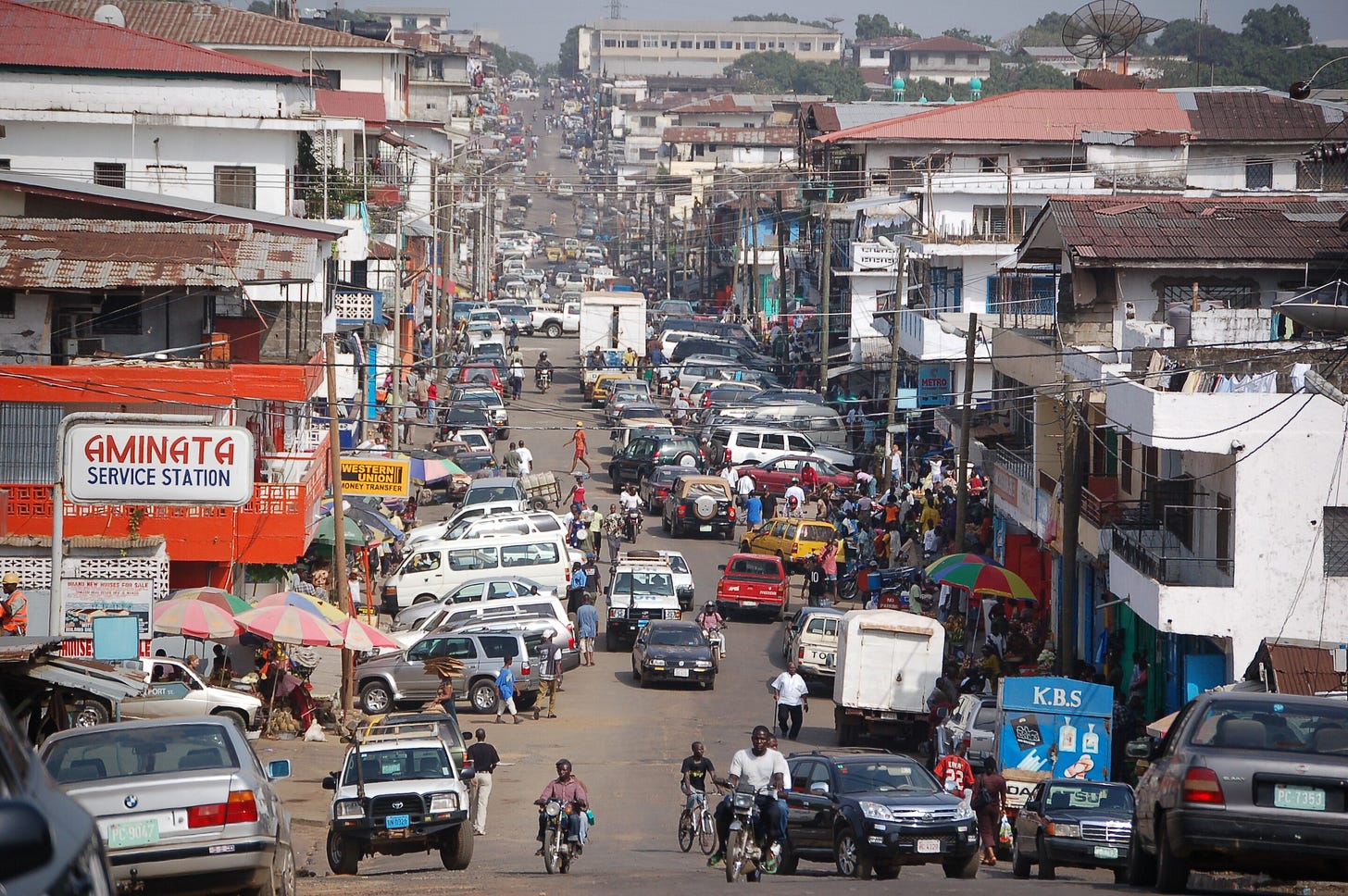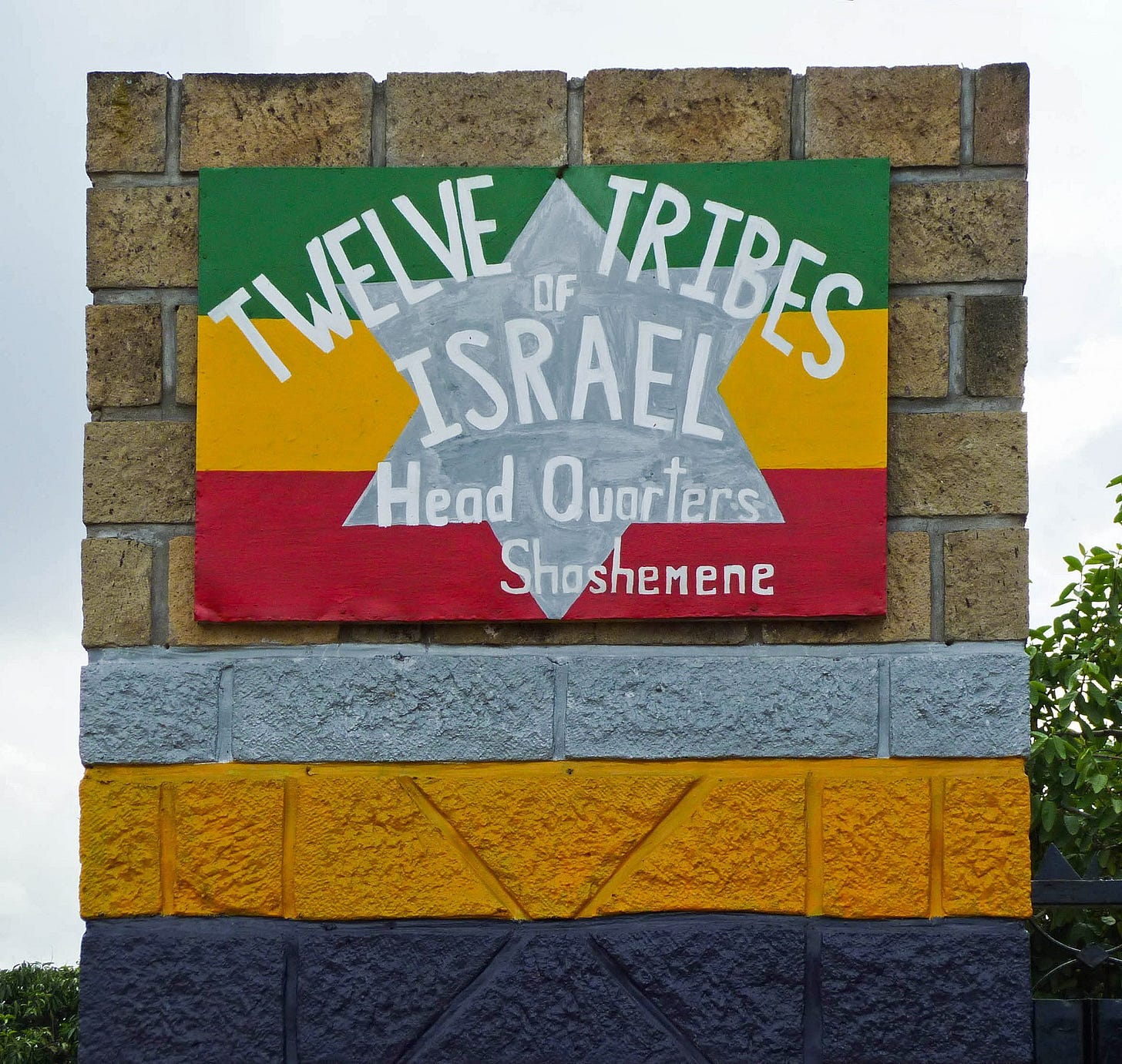🔅 Of Rasta Dreams and Ethiopia’s Realities
And Did You Know That Hippos Can’t Swim?
Good morning from… Can you guess where in Africa this is? (Answer at the bottom!)
Of Rasta Dreams and Ethiopia’s Realities
It’s not every day you see a London DJ drop everything and move to Ethiopia’s farmland, but that’s exactly what happened in 1999 when Ras Paul hopped over to Shashamene, a dusty city 125 miles from Addis Ababa. His mission was to find his “true home,” beyond Babylon’s cold hustle. But two decades later, that utopian dream is colliding with real-world Ethiopian politics.
Let’s rewind to the 1950s: Ethiopia’s then-Emperor Haile Selassie granted 500 acres in Shashamene as a thank-you to folks worldwide who supported his country against Italy’s fascist occupation. Fast-forward to the ’60s and beyond, and Rastafarians from Jamaica, the UK, and America flocked in, because they worship Selassie as a latter-day Messiah. It’s basically a Pan-African redemption song come to life.
Cut to present-day Shashamene, population 210,000 and counting. That “free land” from Haile Selassie? Gone, eaten by decades of local development. Moreover, Oromia—the region that hosts Shashamene—has seen tension and periodic unrest, especially in 2020’s protests, which tested the Rastas’ welcome. Where Rasta colors once symbolized the continent’s anti-colonial defiance, they now rub some Oromo folks the wrong way as “imperial” relics. It doesn’t help that law enforcement frowns upon flying the old imperial flag, seeing it as a symbol of oppression.
This friction has real consequences: Rastas who built homes on land they believe was gifted by Haile Selassie get served eviction notices from local officials, or even old tenants. Meanwhile, Ethiopia’s immigration rules aren’t exactly rolling out the red, gold, and green carpet. Many longtime Rastas now exist in legal limbo, their residence permits expired or unrenewed.
The culture clash also extends to religion. While Rastafarians infuse faith and ganja into daily life, Shashamene’s newly established Protestant churches are less than thrilled. They see cannabis use as heresy, and some question whether these dreadlocked strangers are “real” Ethiopians at all.
Yet the Rastas soldier on: Maurice Lee, born in Shashamene to Jamaican immigrants, toggles between Jamaican patois and Amharic in one breath. For him, leaving the homeland of Marcus Garvey and Bob Marley was never on the cards—he’s Ethiopian in everything but official paperwork.
That might be the heartbeat of Shashamene’s Rastas: a stubborn devotion to a “promised land” that’s also a bureaucratic headache. They face shifting politics, land grabs, and the ghosts of an empire that collapsed a half-century ago. But for them, the dream endures.
Scientists Discover a Promising Oral Drug That Prevents Ebola Deaths

Researchers have reported a significant breakthrough against Ebola: an oral antiviral pill that protects monkeys from dying after they have been infected with the deadly virus. Previous treatments have relied on antibody-based methods requiring cold-chain logistics, making them hard to deploy in resource-limited regions. This new pill could be a game-changer.
For context, Ebola is the kind of virus that thoroughly ruins everyone’s day—up to 90% of human cases can end in fatality, and nonhuman primates fare no better. Over 11,000 people died in West Africa between 2013 and 2016, and nearly 2,300 perished during an outbreak in the Democratic Republic of Congo just a few years later. Vaccine programs have improved things, sure, but exotic refrigeration and injection protocols aren’t exactly a picnic in regions with few paved roads, let alone stable electricity.
And we come to Obeldesivir (ODV)—like some unsung hero, it’s already flashed impressive virus-kicking powers against a range of RNA viruses (which, conveniently, includes Ebola). Scientists just tested ODV in two types of macaques dosed with the super potent Makona strain, and they threw the monkeys a lifeline 24 hours after exposure. What happened next? Zero macaques expired in the rhesus group, and a solid 80% of the crab-eating set survived, which is shockingly good news considering we’re talking about a disease known for unbridled mayhem.
Researchers think ODV might rally the monkeys’ immune systems into a more coordinated T-cell attack while also putting the brakes on runaway inflammation—so you get a better shot at survival without your body turning on itself.
If this means folks on the ground can simply hand over a pill—rather than relying on cold trucks, fancy fridges, or intricately timed injection sprees—then ODV could become the superhero we always needed. And while more studies are required (the standard scientific “hang on a second”), researchers are cautiously optimistic that we might be on the cusp of waving Ebola bye bye.
Very Random Fact for Today: Hippos Can’t Swim—and Other Wild Facts

Turns out the heavyweight champion of Africa’s waterways has a secret: hippos can’t actually swim.
Yes, you read that right. Despite spending most of their lives submerged and looking like the synchronized swimmers of the animal kingdom, hippos don’t do the doggy paddle. What they do is strut along the bottom of rivers like it’s a slow-motion catwalk, using their legs to push off and glide underwater. Elegant? Surprisingly, yes. Technically swimming? Not even close.
So What Are They Doing Down There? Picture a 3,000-pound ballerina gently launching herself off the riverbed and floating up for air every few minutes. That’s your average hippo commute. Their bodies are too dense to float and too chill to care. What they lack in buoyancy, they make up for in anti-gravity swagger.
And aside from being the best way to beat the heat, hippo skin is sensitive—think less “tough hide,” more “needs a skincare routine.” Drying out under the African sun is a no-go, which is why you’ll rarely spot a hippo sunbathing. Instead, they marinate in rivers and swamps and produce a natural “pink sweat” that works like SPF 50.
When the sun dips, hippos roll out of the water and go to town—literally—on grass. They can clock up to 150 pounds of food in a single night. Then, back into the water for some much-needed lounging and digestion.
Despite their calm, half-submerged poker faces, hippos are not to be messed with. Territorial, moody, and able to run 20 mph on land, they’re widely considered one of the most dangerous animals in Africa.
So next time you see a hippo bobbing peacefully in the water, remember: it’s not swimming—it’s underwater moonwalking. With pink sunscreen. And the potential to outrun you.
Food for Thought
“For a rash to heal, you must stop scratching it.”
— Tanzania Proverb
And the Answer is…
The photo is taken in Monrovia, Liberia! You can also send in your own photos, alongside the location, and we’ll do our best to feature them.



